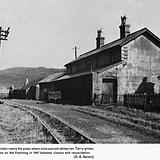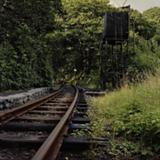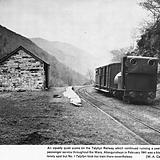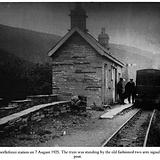It’s 1986. I’m on holiday with my parents, and we’re staying in a flat behind the Dolgoch Falls hotel. The falls themselves are a five minute walk away through the woods but, even better, if you go the other way then Dolgoch station on the Talyllyn Railway is closer still.
Platforms
Stations
Ho Ho Ho!
If you’re interested in garden railways, and you’ve been a good boy or girl all year (or at least, haven’t done anything too terrible), you’ll doubtless have lots of worthy suggestions for Father Xmas. Here are some of mine. (Hint hint, dear. Yes, I’m going to the Next website imminently.)
Crossing the Lawn
For years, the lawn would prove a formidable barrier to the coming of the railway. In 1854, John Evans of Glyncoch raised a share capital of five thousand pounds and set out with an army of 15,000 navvies to construct a standard gauge line running east to west, directly across the grass. Every man, and all their equipment, disappeared into the mist and was never seen again, although rumours of their eventual fate were rife for decades afterwards…

Progressive Wrack
My week “off” has turned out much as I feared, if not worse. In a mocking echo of the sixties, when the motor car ran rampant and almost killed off the railways, there is not a day this week when I am not taking a (broken) car to a garage or fetching a (still broken) one back, leaving little time for railway construction. The eldest JRA and I have, however, been on a prototype train every day as a consequence. But as these were all soulless Arriva DMUs, they haven’t been much compensation. (There are rumours of a more enchanting trip out on Friday…)
Inaugural Run
I hesitate to call this the inaugural train, since it’s obviously completely the wrong scale (but crucially, the right gauge) and it’s a butt-ugly American outline loco to boot. (I try to embrace all creeds and colours of the world, but I’m afraid I’m a hopeless xenophobe when it comes to foreign engines - all those pipes showing, bleah.) Nevertheless, this breakneck run round the track laid so far at least shows that what we have works. Unfortunately, the “real steam” doesn’t show in the video (but the JRAs loved it).
Where Chickens Roam
 Here’s the picture of Tan-y-grisiau station on the FR between closure and revival. I particularly like the grass and the chickens on the line.
Here’s the picture of Tan-y-grisiau station on the FR between closure and revival. I particularly like the grass and the chickens on the line.
This is from More British Narrow Gauge Steam - A Second Pictorial Survey by M. J. Messenger, published by D. Bradford Barton in 1974. An essential purchase for the narrow gauge fan - lots of copies floating around Abebooks, although the first volume appears rather harder to obtain now (fortunately, I snapped one up some time ago).
The First Rule of Glue
…Don’t use Bostik! When will I learn not to buy this stuff? It dries squidgy and pliable, rather than hard. It might be fine for gluing paper and flies’ wings, but it’s a complete failure for anything where you want a rigid join - like, say, a plastic gear wheel on a metal axle. It lasted about five seconds, or roughly halfway round a circle of track.
Driving the First Spike
 (Well, the first 50mm screw actually.)
(Well, the first 50mm screw actually.)
I have actually been a supporting member of the Welsh Highland Railway Society for several years, but my contributions in rebuilding that line have been purely financial rather than participatory. This was for several reasons: a) the GRA and I had a new house to refurbish first, so we couldn’t spare the time; b) if you’d seen the bodged mess we’d made of the house, you really wouldn’t want to let us near your railway. To this, I can now add, or at least confirm, reason c) it’s too much like hard work.


